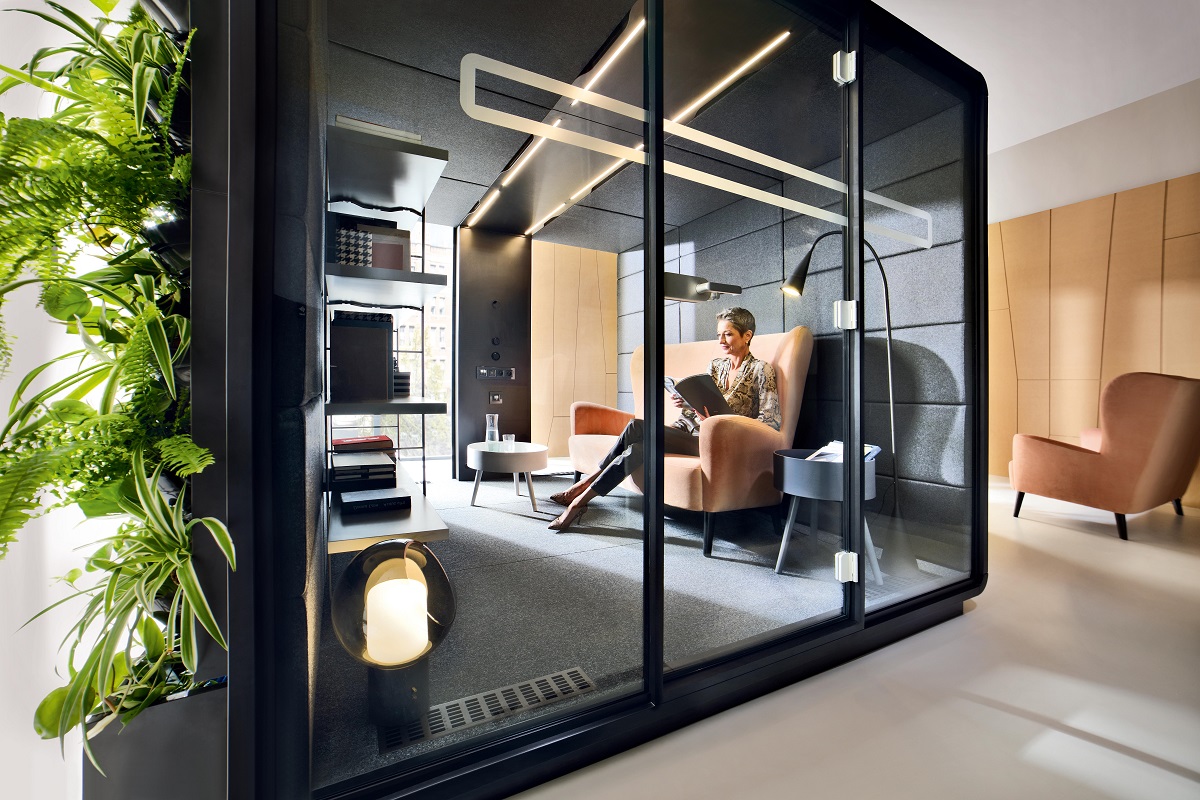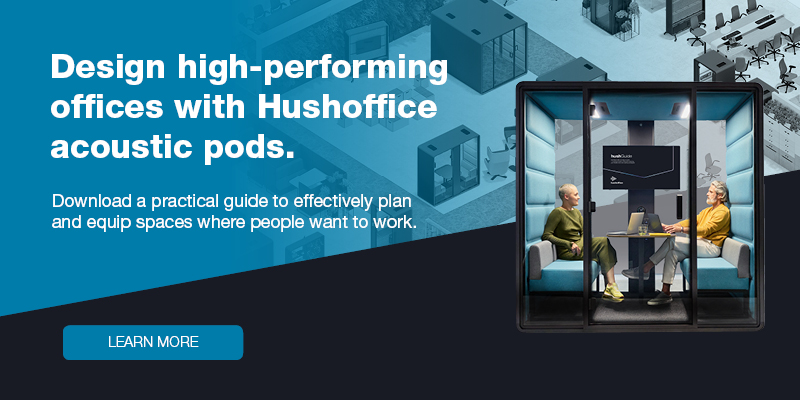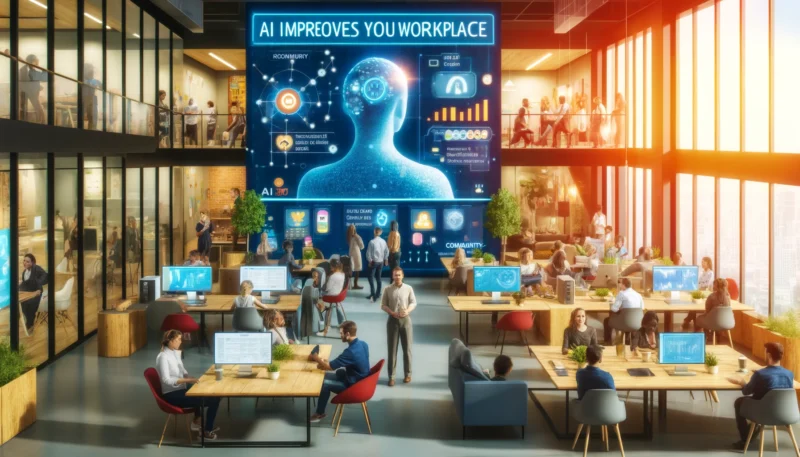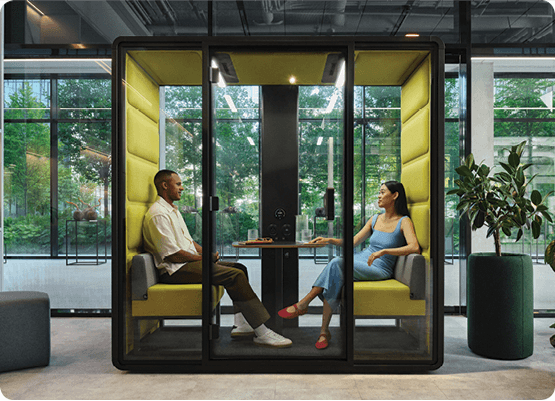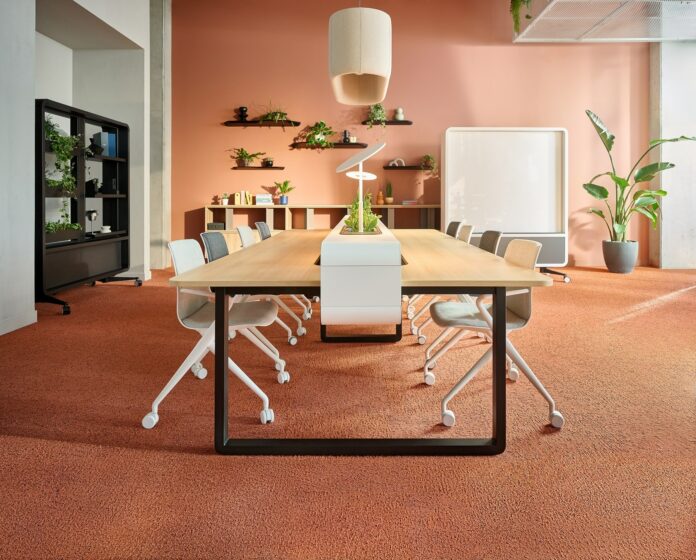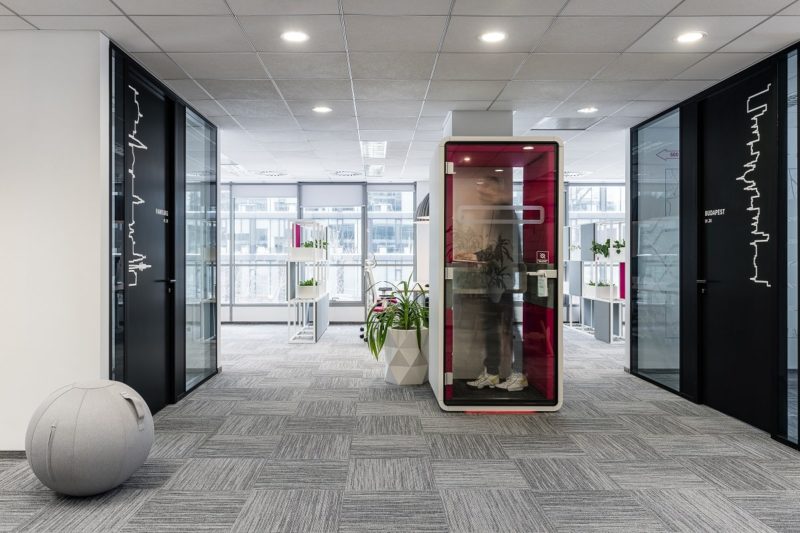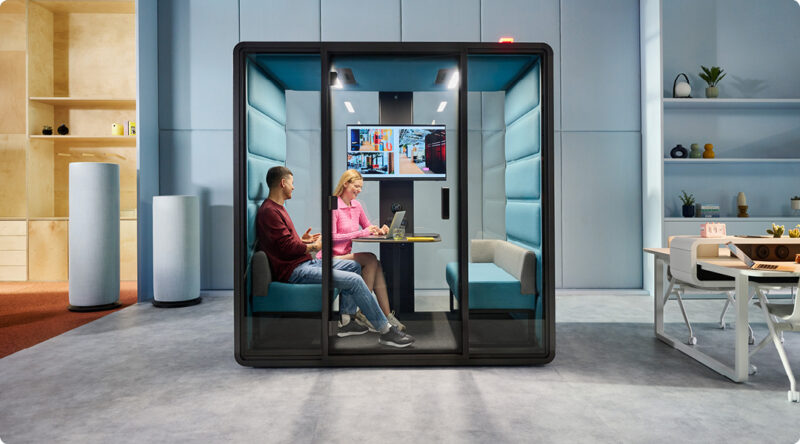5 ways to prevent open office burnout
- Posted on: 6 September 2021
- By: Hushoffice Team
KEY TAKEAWAYS
- A noisy, active office can cause burnout. It can negatively impact an employee’s sense of autonomy, causing anxiety. Open spaces can burn introverts out more quickly (50% of the workforce). Regardless of introversion and extroversion, noise in the office is linked to reduced productivity and stress which leads to burnout.
- An open space can also exhaust a team with information unrelated to the goal at hand. It can fail to give employees control over their mental bandwidth. Too much information tires the mind and weakens decision-making.
- 5 ways to address burnout in the open office? Get Proactive Communicate about it. Encourage struggling employees to take regular micro-breaks in quiet spaces; Zone the OfficePartitions and office pods lend privacy and comfort, eliminating noise while keeping the layout flexible; Soundmask Reduce background speech intelligibility; Invest Work pods like hushPhone give privacy and quiet to both the pod user and team at large; Add “Fuzz” If the office echoes. Soundproofing, sound dampening, and sound absorbing materials do the trick.
- Why do work pods work? Multi-faceted acoustics benefit. Privacy. Visual calm. A sense of autonomy over one’s space — the holy grail of hybrid office design.
A noisy, active office can burn employees out.
An open space is full of sensory distractions. Without soundproof acoustic solutions like sound absorbing panels and foams, sensory overload results, a fast track to burnout. This is because noise and activity impede concentration while negatively impacting an employee’s sense of autonomy. This causes unnecessary anxiety at work.
Burnout might seem abstract or cerebral, but it physically affects the brain, and can impact it in permanent ways. So it’s important we tweak and retrofit our open spaces to support focus. Look to environmental factors like sound and sight which impact people immediately and deeply.
– explains Mateusz Barczyk, Senior Brand Manager, Hushoffice
Without private environments such as conference rooms, soundproof phone booths, or office meeting pods, the office bombards employees with relative chaos, making them feel powerless in their environment. As such, it misses an awesome opportunity to be a sanctuary of focus in a hybrid world. Half-remote employees with imperfect home office setups crave this sanctuary.
Although shared spaces are geared toward collaboration, they can actually hinder focus, and stress people out. And stress of any kind can contribute to burnout. This explains why noisy open office spaces are linked to anxiety. A 2016 study shows reduced mental health is linked with environmental noise. “Noise” being defined as any form of sound that’s unpleasant or distracting. Workplace noise is shown to raise heart disease risk factors. Environmental stressors like background office noise affect both the mind and the body.
Open spaces burn out introverts more quickly.
And introverts make up 50% of the workforce. Introverted people need quiet to concentrate and solitude to stay centered. They prefer to work alone or in small teams, and are easily drained by larger groups. Having a heightened sensitivity to stimuli, too much activity in their workspace leaves them distracted, unfocused, and less effective.

We all process information through our senses in different ways. Some of us are basically sensory seeking, some, basically sensory avoiding. But all of us shift between the two to some degree. If the office lacks a range of environments with a range of soundscapes and stimuli levels, it fails to give employees control over their work environment. Comfort as well as output suffer in this case.
– adds Mateusz Barczyk, Senior Brand Manager, Hushoffice
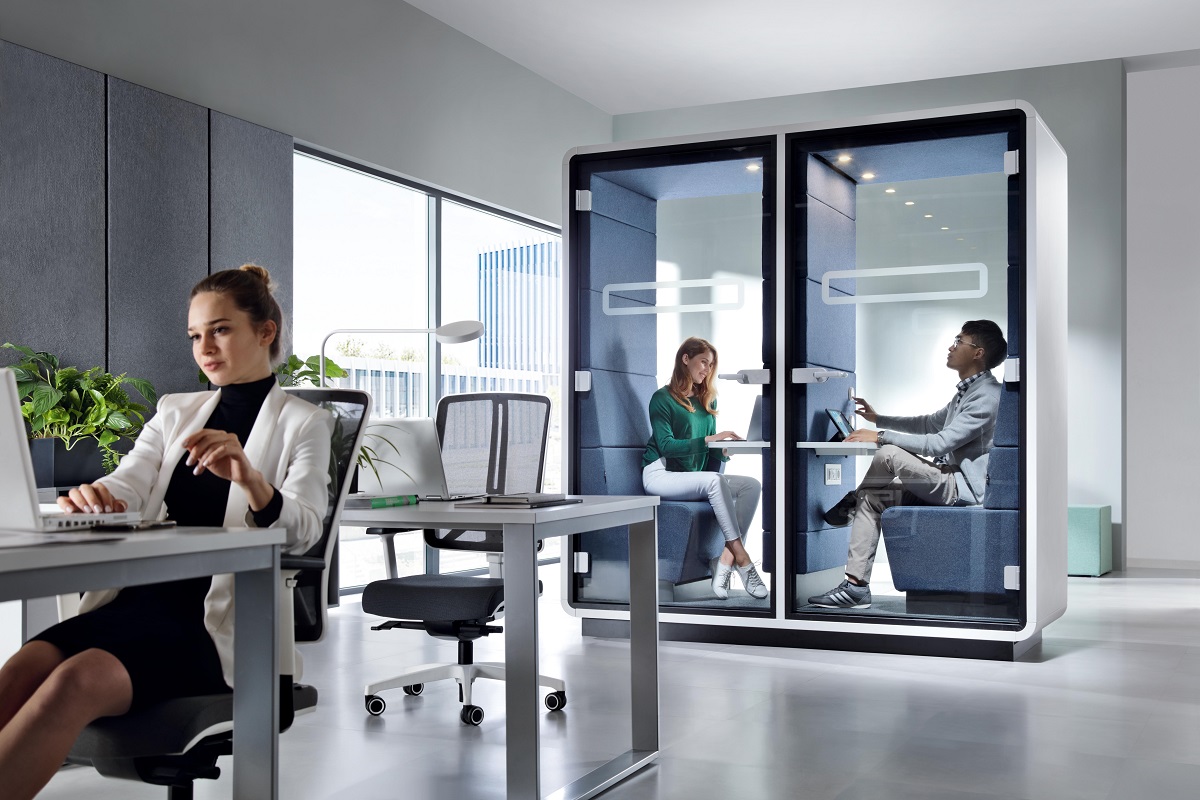
While all workers enjoy aspects of working in an open space, introverts require more quiet and less visual distraction to be effective. And regardless of introversion and extroversion, people say noise at work makes them less productive.
Physical changes in the brain from burnout…
- Enlarged amygdala, the part of the brain that handles emotional response
- Weaker connections between amygdala and cingulate cortex — another part of the brain that handles emotions
- Weaker connections between amygdala and medial prefrontal cortex — the brain structure responsible for decision making
An open space can bombard a team with information unrelated to the goal at hand.
Not all tasks benefit from a lively environment.
When employees have no quiet space for concentrative work, they’re at the mercy of surrounding sound and visuals.
If the workspace isn’t working for the employee, the employee is working for the workspace. In the literal sense of work, they are exerting extra energy fending off distractions. Office privacy booths are a strong solution because they foster focus on key tasks like heads-down work, videoconferencing, or team meetings. Booths also trap noise while bringing acoustic fuzz to a space, making the overall soundscape more pleasant.
– says Eliza Donek, Product Manager, Hushoffice
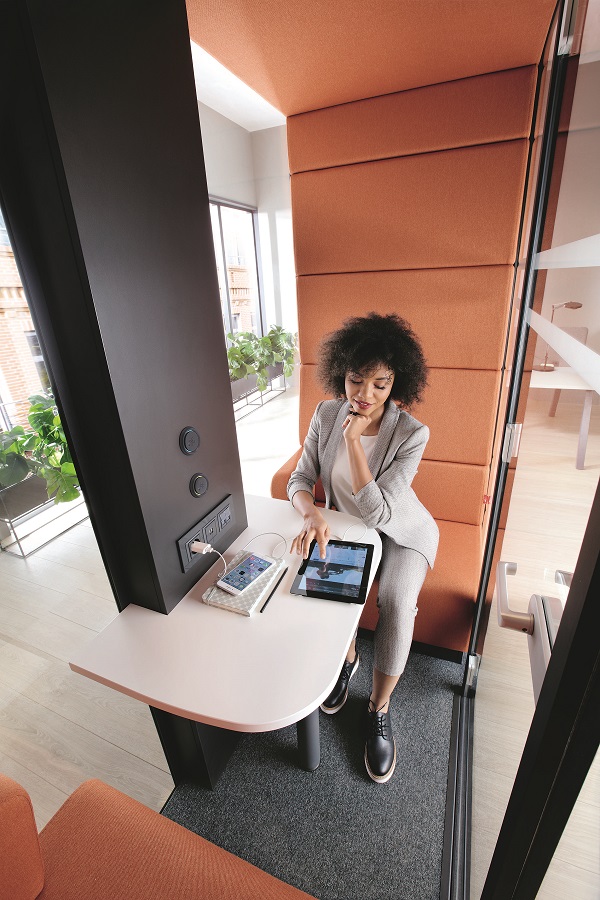
Attention is a precious resource!
Information pollution can be best understood as an excess of irrelevant, redundant, unsolicited, unhelpful, or low-value information. Information overload is closely related: a sheer excess of information overall. Both are open space problems. And both reduce effectiveness because too much information tires the mind.
When noise breaks our attention, it weakens it.
– adds Eliza Donek, Product Manager, Hushoffice
Human beings have limited mental bandwidth. We can process only a certain amount of information before we’re overwhelmed and less effective.
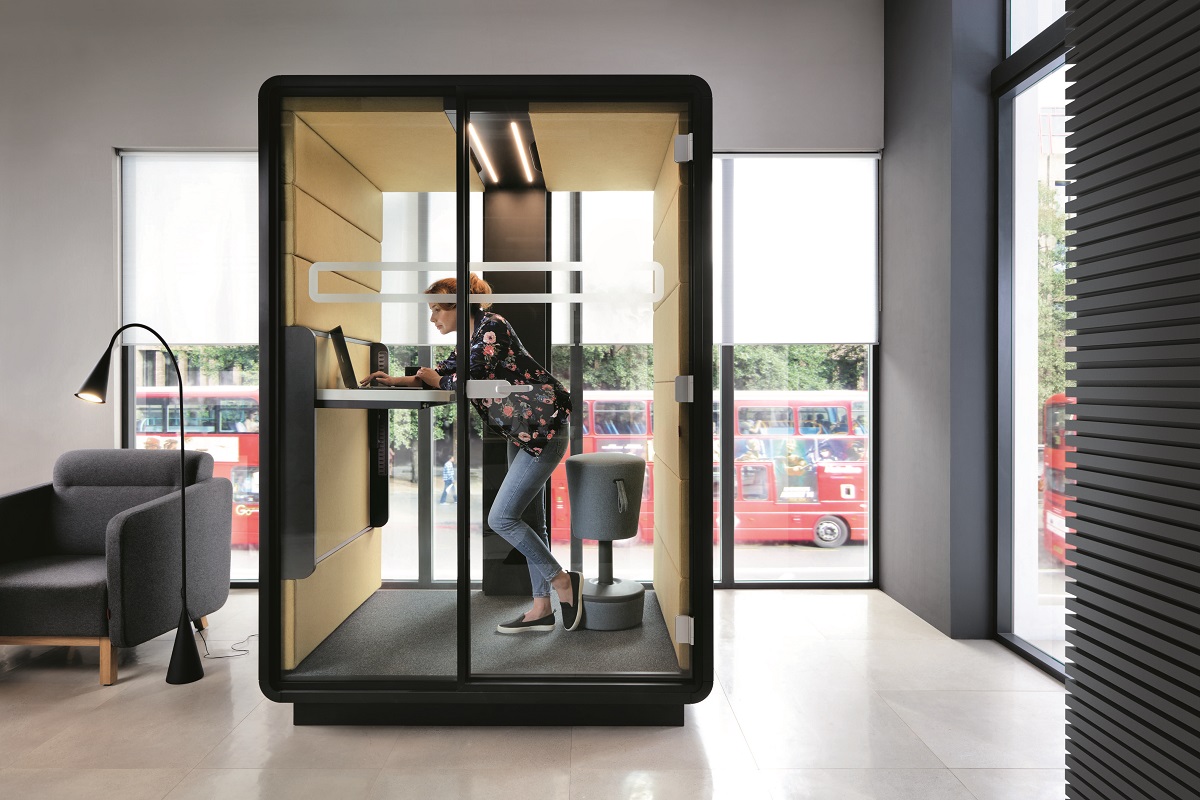
Work pods give employees control over their attention and help prevent open office burnout.
Work pods give employees control over their attention and help prevent open office burnout.
Colleague chatter, casual conversation, printer noise, keyboard clicks, phone calls, message pings, and video meetings — every decibel is trapped and dampened by work pods.
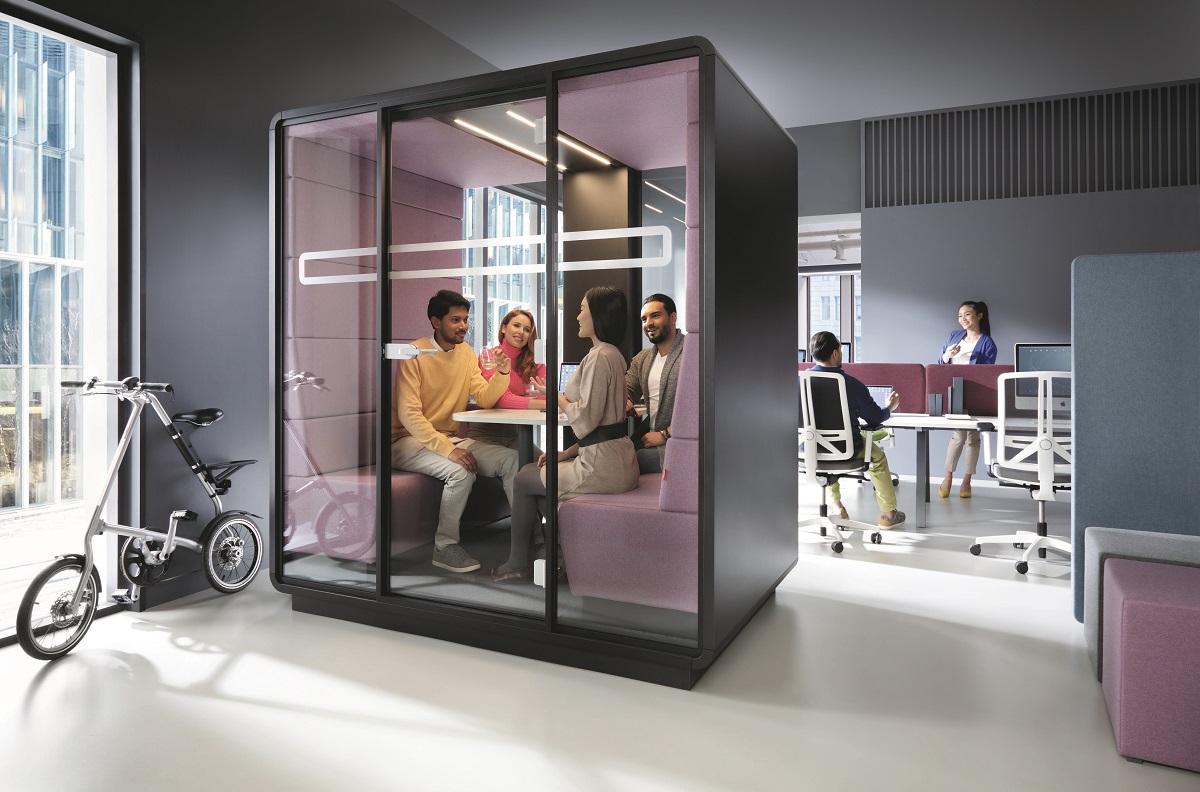
- Multi-faceted Acoustics Benefit An office pod’s hard carcass and tempered glass panels act as sound blocking panels that block a sound’s route through the office. It also traps noise within it. Simultaneously, the pod user enjoys a finely engineered, perfectly tweakable acoustic space. Office noise is reduced overall.
- Privacy & Visual Calm A pod’s enclosed space lends privacy while eliminating visual distractions, reducing the stress of unnecessary stimulation. Hush office pod glass rear panels can be frosted for extra privacy.
- Autonomy Adjustable lighting, ventilation, and sit-stand freedom (hushWork.sit&stand) give employees a sense of control and autonomy over their space, foundational to effectiveness and well-being.
Autonomy is the holy grail of hybrid office design. Employees with access to on-demand pods and workspaces have greater command over their bandwidth. They are primed to succeed. Modular meeting pods, conference booths, collaborative meeting pods, and office phone booths all serve one of the most basic employee needs: the ability to choose HOW to work.
5 immediate ways to address burnout in the open office
- Get proactive: incentivize personal days, require paid vacations, and communicate about the physical effect of burnout, acknowledging its severity. Encourage struggling employees to take regular micro-breaks in quiet, aesthetically sparse spaces like a terrace or an office privacy pod.
- Zone the office space using freestanding partitions and mobile office pods that give privacy and comfort to sensory avoiding, introverted, or burnt-out employees. These solutions block and absorb noise and keep the floor plan flexible.
- Soundmask the space by investing in a white noise machine for the office or a commercial office sound masking system. This reduces the intelligibility of background speech. Less intelligible speech is less distracting, whether colleague chatter or think-out-loud employees are the source. Masking makes the office quieter.
- Invest in a private phone booth like hushPhone for private calls. Office phone pods are like compact speech privacy systems — they ensure privacy of the pod user’s call while containing the call itself so colleagues on the floor aren’t distracted by it.
- If the office echoes with reverberating sounds, add “fuzz” to the space — soundproofing, sound dampening, and sound absorbing materials. Soft seating and sound reducing textiles also work, as do acoustic panels, foams, and sound absorbers.
Check out the Hushoffice pod line.
Hush pod frequently asked questions
How do I relocate Hush pods?
The hushHybrid video call pod and hushPhone call pod have built-in castors — a simple push to relocate. The HushMeet.L modular conference pod is made of modules — break it down to relocate it. All other pods in the Hush line have ample space beneath for a pallet jack to fit.
What features are included in Hush pods?
Available features across the Hushoffice line include lighting, ventilation, power module, desk (sitting, sit-stand, or fold-away laptop table), sofa, stool, Bluetooth speaker, and a Green Wall. The hushHybrid video conferencing pod offers LED video light strips and a VESA mount. The hushMeet.L meeting booth offers a conference table. Your Hush Your Way!
Have a question? Leave us a message.
